10 things you use every day and had no idea were invented by Germans

Germany has an impressive legacy of scientific research, engineering and design. Many things such as Mercedes cars and Bosch washing machines are recognised around the world but here are 10 everyday items you didn't even realise were German.
1. Ring binders
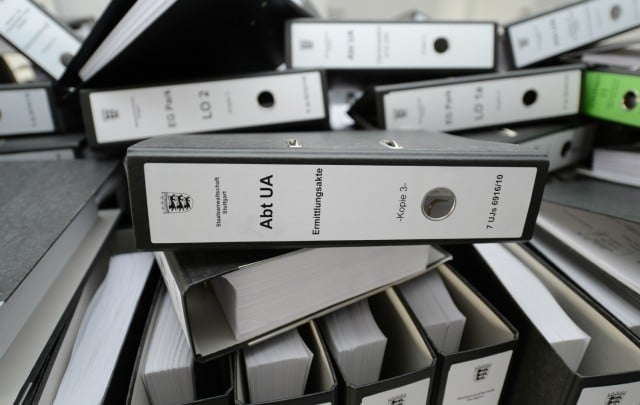 Photo: DPA
Photo: DPA
In line with the the country's reputation for order, it seems natural that this organisational tool came from Germany. The idea came from Friedrich Sonnecken from Bonn in 1886. He also invented the corresponding hole-punch. The idea was then further developed by Louis Leitz of Württemberg to the form we know today.
2. The teddy bear
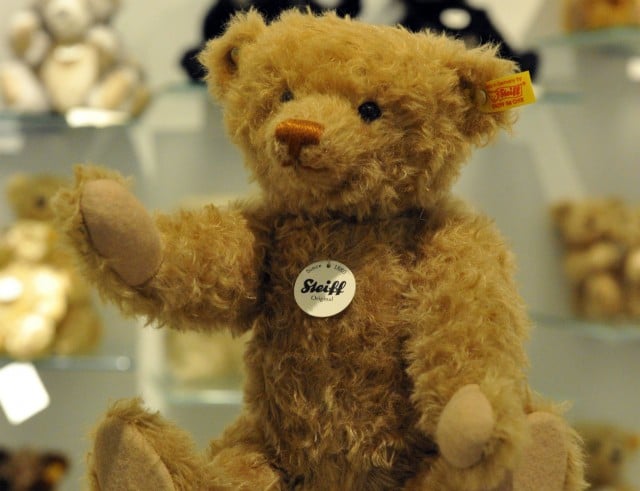 Steiff teddy bear. Photo: DPA
Steiff teddy bear. Photo: DPA
It's hard to imagine a world without the classic bear shaped soft toy, but it only came into being at the start of the 20th century. The Steiff bear is still recognisable around the world for the yellow tag and 'Knopf im Ohr', meaning button in ear.
The founder of the Steiff company, Margaret Steiff from Baden-Württemberg, was partially paralyzed from a young age but this didn't hold her back from becoming an accomplished seamstress and fashion designer. Her first venture into stuffed toys was an elephant pincushion which was such a success that her company quickly began producing other animals and soon moved into automated production to meet demands.
Her nephew Richard Steiff studied at the Stuttgart School of Applied Arts and in 1902 he created the iconic 'Bear 55 PB' which was the world's first plush bear with moveable arms.
Simultaneously, in the USA, candy shop owners Rose and Morris Mitchom also created a stuffed bear toy. They were inspired by a cartoon of President Theodore 'Teddy' Roosevelt in which he refused to shoot a tied up bear on a hunting trip. The president gave permission to the Mitchoms to use his name for the toy, thus the Teddy bear was born. This nickname spread across the world and today even in Germany plush bears are sometimes called Teddybären.
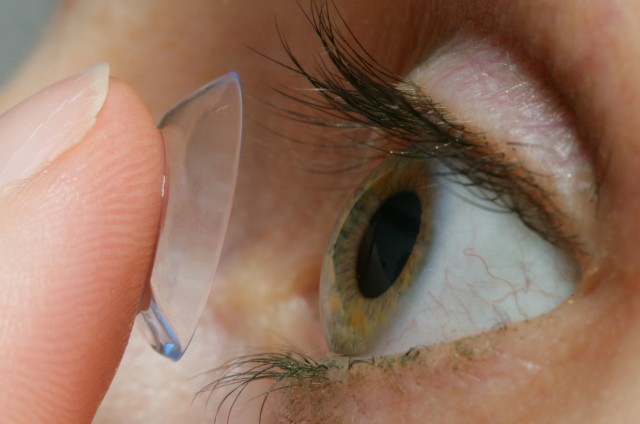 Flexible plastic contact lens. Photo: DPA
Flexible plastic contact lens. Photo: DPA
Italian inventor Leonardo da Vinci was the first person to ever consider the idea of contact lenses. The concept was developed upon by various scientists from all over Europe including René Descartes, Sir John Herschel, Dr. Adolf Fick, Eugene Cult, and Louis J. Girard, but it was German artificial eye maker and optician Adolf Müller-Welt who successfully created the first physical examples of lenses in 1887, which allowed the wearer to actually blink.
Müller-Welt GmbH was also the first company to be able to produce glass lenses on a larger commercial scale. Müller-Welt continues to make contact lenses to this day but thankfully, nowadays they are made of flexible and lightweight plastic rather than glass and only cover the centre of the eye.
4. MP3 format
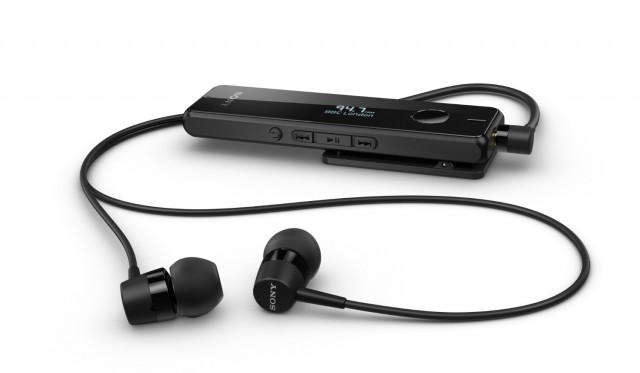 MP3 player. Photo: DPA
MP3 player. Photo: DPA
Thanks to German engineering you can hold thousands of songs in the palm of your hand without being buried under a mountain of CD's or casette tapes. MP3 format is a compressed form of audio which eradicates all wavelengths that the human ear can't pick up and makes the file size much smaller. It was created by a team from Universität Erlangen-Nürnberg working alongside the Fraunhofer-Institut für Integrierte Schaltungen in 1987 and has revolutionised audio technology.
4. The refrigerator
 Photo: DPA
Photo: DPA
The fridge is an invention which has completely changed everyday life, for starters without them you'd have to drink room temperature orange juice (and nobody wants that). Before the modern refrigerator, people used ice boxes to keep food cool. These were, as the name suggests, just a box full of ice. There are many credited with inventing the first mechanical cooling device but Engineer Carl von Linde from Oberfranken is potentially the engineer who has had the most influence in the creation of the modern fridge.
At the age of 29 he created his first 'compression cooling machine' and by 1895 he had patented his air liquefaction process, which used a liquid coolant pumped through tubes to absorb the heat from the food inside the fridge as the coolant becomes a gas. The coolant is then pumped to the outside to release the heat as it becomes a liquid again.
This concept is still the basis for refrigeration today. Fridges were initially gas powered and until the 1950's were considered a luxury until mass production of electric fridges took off in the 1960's making the price almost half what they were before.
5. Telephone
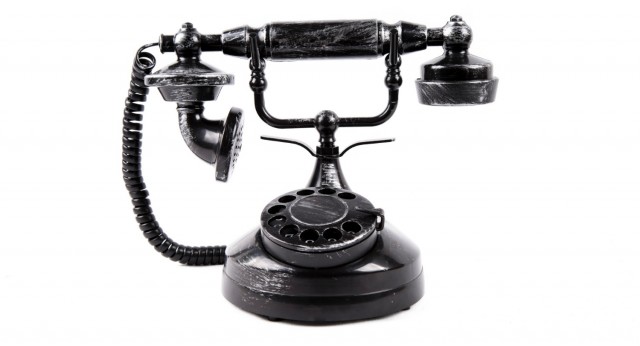 Photo: Public Domain Pictures
Photo: Public Domain Pictures
In 1861 Phillipp Reis was the first person to invent the 'make and break telephone', where sound is converted into electrical signals and back again. It is a common misconception that Alexander Graham Bell or Thomas Edison came up with the idea, but Reis' work predates theirs and Bell actually went to see the Reis telephone, before beginning his own work.
One of the first sentences he managed to transmit was "Das Pferd frisst keinen Gurkensalat" (literally the horse doesn't eat cucumber salad) because the phrase is notoriously difficult to understand and Reis sought to prove that his invention worked clearly. Unfortunately, his telephone never worked perfectly but was later completed by Bell.
6. Thermos flask
 Photo: PXhere
Photo: PXhere
It keeps cold things cold and hot things hot, what camping trip or long journey would be complete without a thermos flask? Although it was technically Scottish scientist James Dewar who came up with the idea for a container surrounded by an insulating layer in the form of a vacuum, he never patented the creation or envisioned that it would be used for drinks.
It was German glassblowers Reinhold Burger and Albert Aschenbrenner who decided to put the invention to commerical use in 1904. They held a contest to name the "vacuum flask" and a resident of Munich submitted the winning suggestion of "Thermos", which came from the Greek word "Therme" meaning "hot".
The thermos flask name has since become synonymous with the concept of a vacuum flask over the years and consequently became a genericized trademark in 1963.
7. Flouride toothpaste
 Photo: DPA
Photo: DPA
There have been a huge number of variations on tooth cleaning products over the years, from pleasant sounding mixtures involving mint leaves or ginseng in China to decidedly less appetising crushed bones and oster shells in ancient Greece.
Throughout the 19th century, people tended to use powders based on soaps, chalk, ash and other ingredients, but it was German chemist Albert Deninger who first researched into the benefits of calcium flouride in tooth care. He began with experiments on himself in 1896 to check whether the chemicals would be harmful and then in 1906 proceeded to carry out tests on family members and friends.
His findings were very quickly picked up by the Karl Friedrich Toellner Chemical Company of Bremen, who sold these products under the brand name "Tanagra".
8. Coffee filters
 Photo: DPA
Photo: DPA
Tired of having to constantly wring out stain-ridden cloth filters, or scrape sludge off the bottom of the coffee pot, Dresden housewife Melitta Bentz devised a simple but brilliant filtration system by laying blotting paper from her children's school books over the perforated bottom of a brass pot. Realising the genius of her idea, she quickly set up shop with her husband and patented her invention in 1908.
9. Chip Card
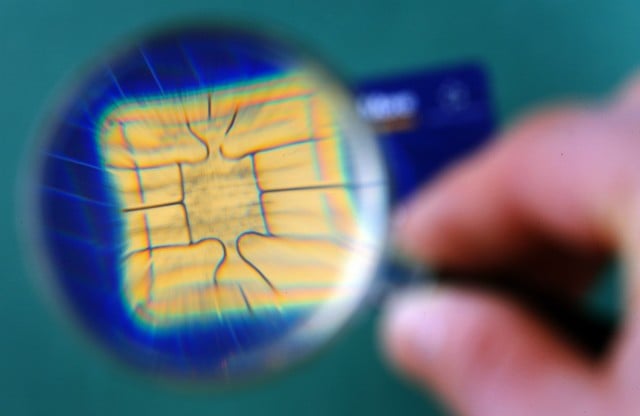 Photo: DPA
Photo: DPA
This may seem a surprising invention to attribute to Germany, as anyone who's spent time in the country will have noticed the general aversion of many businesses to taking payments by card. But in the 1960s, financial service providers were looking for a way to make their new plastic payment cards more secure.
A magnetic strip and signature didn't provide enough information - so in 1977, German inventors Jürgen Dethloff and Helmut Göttrup created the first card with an in-built programmable microprocessor, the ancestor of the chip and PIN cards in our wallets today.
10. Bicycles
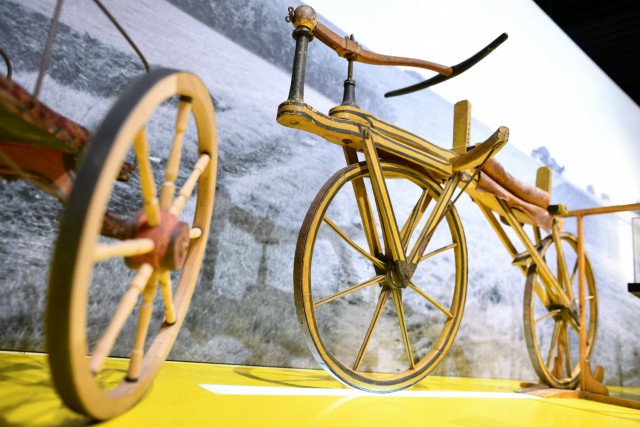 Dais' hobby horse. Photo: DPA
Dais' hobby horse. Photo: DPA
In 1817, a German aristocrat and inventor named Karl von Drais debuted the world's first human-powered, two-wheeled vehicle, known by many names throughout Europe, including Draisienne, dandy horse and hobby horse. Drais built his machine in hopes of solving a world shortage of horses.
This came about because, in 1815, an ash cloud from a volcanic eruption in Indonesia spread around the world, lowering global temperatures. According to the Smithsonian magazine, this caused crops to fail and many animals, including horses, died of starvation. Drais hoped his vehicle would be a new way for people to get around.
The vehicle did inspire the modern bicycle but was a far cry from what we're used to today. Originally weighed around 23kg, it had no pedals or gears. The hobby horse was a fad for many years before they were banned from public paths as it was considered a danger to pedestrians.
Comments
See Also
1. Ring binders
 Photo: DPA
Photo: DPA
In line with the the country's reputation for order, it seems natural that this organisational tool came from Germany. The idea came from Friedrich Sonnecken from Bonn in 1886. He also invented the corresponding hole-punch. The idea was then further developed by Louis Leitz of Württemberg to the form we know today.
2. The teddy bear
 Steiff teddy bear. Photo: DPA
Steiff teddy bear. Photo: DPA
It's hard to imagine a world without the classic bear shaped soft toy, but it only came into being at the start of the 20th century. The Steiff bear is still recognisable around the world for the yellow tag and 'Knopf im Ohr', meaning button in ear.
The founder of the Steiff company, Margaret Steiff from Baden-Württemberg, was partially paralyzed from a young age but this didn't hold her back from becoming an accomplished seamstress and fashion designer. Her first venture into stuffed toys was an elephant pincushion which was such a success that her company quickly began producing other animals and soon moved into automated production to meet demands.
Her nephew Richard Steiff studied at the Stuttgart School of Applied Arts and in 1902 he created the iconic 'Bear 55 PB' which was the world's first plush bear with moveable arms.
Simultaneously, in the USA, candy shop owners Rose and Morris Mitchom also created a stuffed bear toy. They were inspired by a cartoon of President Theodore 'Teddy' Roosevelt in which he refused to shoot a tied up bear on a hunting trip. The president gave permission to the Mitchoms to use his name for the toy, thus the Teddy bear was born. This nickname spread across the world and today even in Germany plush bears are sometimes called Teddybären.
 Flexible plastic contact lens. Photo: DPA
Flexible plastic contact lens. Photo: DPA
Italian inventor Leonardo da Vinci was the first person to ever consider the idea of contact lenses. The concept was developed upon by various scientists from all over Europe including René Descartes, Sir John Herschel, Dr. Adolf Fick, Eugene Cult, and Louis J. Girard, but it was German artificial eye maker and optician Adolf Müller-Welt who successfully created the first physical examples of lenses in 1887, which allowed the wearer to actually blink.
Müller-Welt GmbH was also the first company to be able to produce glass lenses on a larger commercial scale. Müller-Welt continues to make contact lenses to this day but thankfully, nowadays they are made of flexible and lightweight plastic rather than glass and only cover the centre of the eye.
4. MP3 format
 MP3 player. Photo: DPA
MP3 player. Photo: DPA
Thanks to German engineering you can hold thousands of songs in the palm of your hand without being buried under a mountain of CD's or casette tapes. MP3 format is a compressed form of audio which eradicates all wavelengths that the human ear can't pick up and makes the file size much smaller. It was created by a team from Universität Erlangen-Nürnberg working alongside the Fraunhofer-Institut für Integrierte Schaltungen in 1987 and has revolutionised audio technology.
4. The refrigerator
 Photo: DPA
Photo: DPA
The fridge is an invention which has completely changed everyday life, for starters without them you'd have to drink room temperature orange juice (and nobody wants that). Before the modern refrigerator, people used ice boxes to keep food cool. These were, as the name suggests, just a box full of ice. There are many credited with inventing the first mechanical cooling device but Engineer Carl von Linde from Oberfranken is potentially the engineer who has had the most influence in the creation of the modern fridge.
At the age of 29 he created his first 'compression cooling machine' and by 1895 he had patented his air liquefaction process, which used a liquid coolant pumped through tubes to absorb the heat from the food inside the fridge as the coolant becomes a gas. The coolant is then pumped to the outside to release the heat as it becomes a liquid again.
This concept is still the basis for refrigeration today. Fridges were initially gas powered and until the 1950's were considered a luxury until mass production of electric fridges took off in the 1960's making the price almost half what they were before.
5. Telephone
 Photo: Public Domain Pictures
Photo: Public Domain Pictures
In 1861 Phillipp Reis was the first person to invent the 'make and break telephone', where sound is converted into electrical signals and back again. It is a common misconception that Alexander Graham Bell or Thomas Edison came up with the idea, but Reis' work predates theirs and Bell actually went to see the Reis telephone, before beginning his own work.
One of the first sentences he managed to transmit was "Das Pferd frisst keinen Gurkensalat" (literally the horse doesn't eat cucumber salad) because the phrase is notoriously difficult to understand and Reis sought to prove that his invention worked clearly. Unfortunately, his telephone never worked perfectly but was later completed by Bell.
6. Thermos flask
 Photo: PXhere
Photo: PXhere
It keeps cold things cold and hot things hot, what camping trip or long journey would be complete without a thermos flask? Although it was technically Scottish scientist James Dewar who came up with the idea for a container surrounded by an insulating layer in the form of a vacuum, he never patented the creation or envisioned that it would be used for drinks.
It was German glassblowers Reinhold Burger and Albert Aschenbrenner who decided to put the invention to commerical use in 1904. They held a contest to name the "vacuum flask" and a resident of Munich submitted the winning suggestion of "Thermos", which came from the Greek word "Therme" meaning "hot".
The thermos flask name has since become synonymous with the concept of a vacuum flask over the years and consequently became a genericized trademark in 1963.
7. Flouride toothpaste
 Photo: DPA
Photo: DPA
There have been a huge number of variations on tooth cleaning products over the years, from pleasant sounding mixtures involving mint leaves or ginseng in China to decidedly less appetising crushed bones and oster shells in ancient Greece.
Throughout the 19th century, people tended to use powders based on soaps, chalk, ash and other ingredients, but it was German chemist Albert Deninger who first researched into the benefits of calcium flouride in tooth care. He began with experiments on himself in 1896 to check whether the chemicals would be harmful and then in 1906 proceeded to carry out tests on family members and friends.
His findings were very quickly picked up by the Karl Friedrich Toellner Chemical Company of Bremen, who sold these products under the brand name "Tanagra".
8. Coffee filters
 Photo: DPA
Photo: DPA
Tired of having to constantly wring out stain-ridden cloth filters, or scrape sludge off the bottom of the coffee pot, Dresden housewife Melitta Bentz devised a simple but brilliant filtration system by laying blotting paper from her children's school books over the perforated bottom of a brass pot. Realising the genius of her idea, she quickly set up shop with her husband and patented her invention in 1908.
9. Chip Card
 Photo: DPA
Photo: DPA
This may seem a surprising invention to attribute to Germany, as anyone who's spent time in the country will have noticed the general aversion of many businesses to taking payments by card. But in the 1960s, financial service providers were looking for a way to make their new plastic payment cards more secure.
A magnetic strip and signature didn't provide enough information - so in 1977, German inventors Jürgen Dethloff and Helmut Göttrup created the first card with an in-built programmable microprocessor, the ancestor of the chip and PIN cards in our wallets today.
10. Bicycles
 Dais' hobby horse. Photo: DPA
Dais' hobby horse. Photo: DPA
In 1817, a German aristocrat and inventor named Karl von Drais debuted the world's first human-powered, two-wheeled vehicle, known by many names throughout Europe, including Draisienne, dandy horse and hobby horse. Drais built his machine in hopes of solving a world shortage of horses.
This came about because, in 1815, an ash cloud from a volcanic eruption in Indonesia spread around the world, lowering global temperatures. According to the Smithsonian magazine, this caused crops to fail and many animals, including horses, died of starvation. Drais hoped his vehicle would be a new way for people to get around.
The vehicle did inspire the modern bicycle but was a far cry from what we're used to today. Originally weighed around 23kg, it had no pedals or gears. The hobby horse was a fad for many years before they were banned from public paths as it was considered a danger to pedestrians.
Join the conversation in our comments section below. Share your own views and experience and if you have a question or suggestion for our journalists then email us at [email protected].
Please keep comments civil, constructive and on topic – and make sure to read our terms of use before getting involved.
Please log in here to leave a comment.